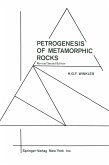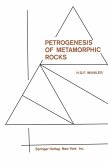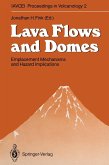Pyrometamorphism is a type of contact metamorphism (sanidinite facies) involving very high temperatures that may cause fusion in suitable lithologies at very low pressures. The high temperatures are attained by flow of mafic magma through conduits, by way of spontaneous combustion of coal, carbonaceous sediments, oil and gas, and through the action of lightning strikes. Temperature gradients are typically extreme, varying by several hundred degrees over a few metres or even centimetres. Relatively short periods of heating and cooling create an environment dominated by metastable melting and rapid mineral reaction rates driven by significant temperature overstepping of equilibrium conditions. This results in the formation of a large variety of minerals, many of which are metastable and are only found in pyrometamorphic rocks.
The book is aimed for the specialist but also for students and researchers looking for an introduction into pyrometamorphism.
Dieser Download kann aus rechtlichen Gründen nur mit Rechnungsadresse in A, B, BG, CY, CZ, D, DK, EW, E, FIN, F, GR, HR, H, IRL, I, LT, L, LR, M, NL, PL, P, R, S, SLO, SK ausgeliefert werden.









